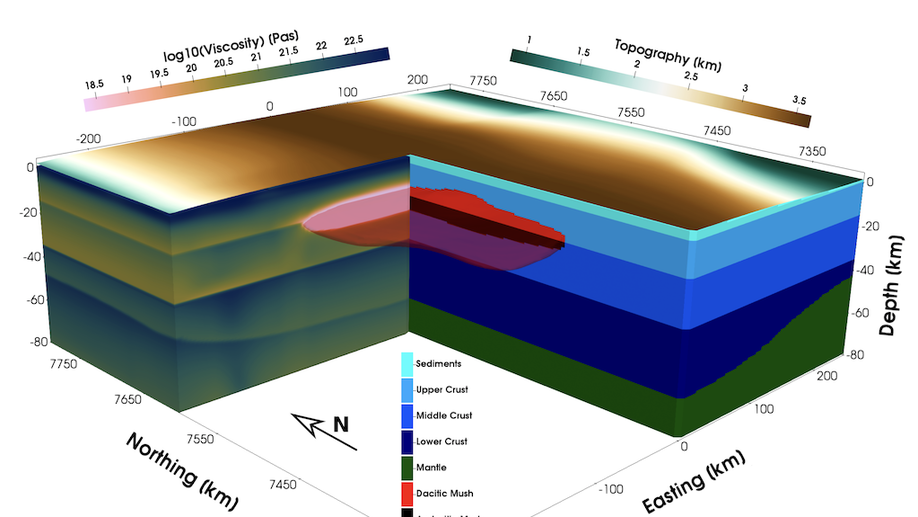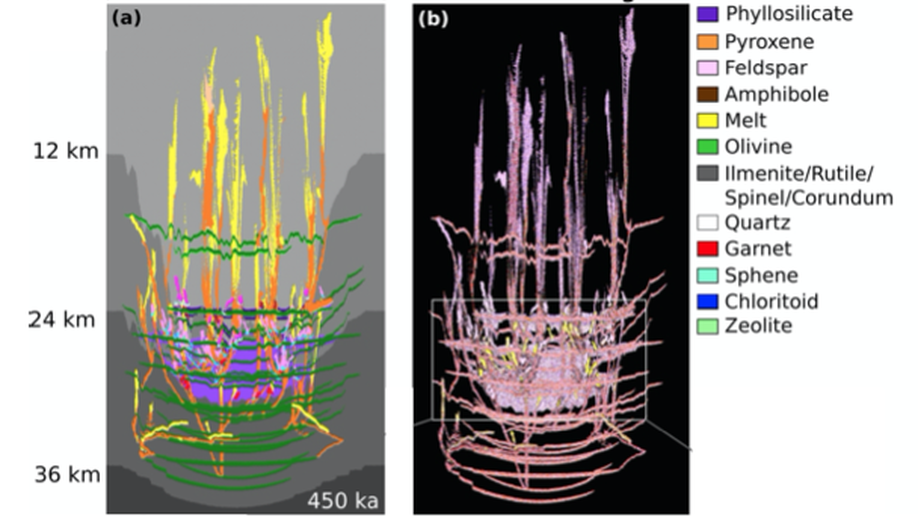The manner in which magma moves through the Earth is incomplete understood, partly because we currently lack computer models that can simulate the full magmatic system, from its origin in the mantle (at depths > 150 km) until its arrival in the magma chambers underneath volcanoes at a few kilometers depth.
MAGMA is a Consolidator Grant research project funded by the European Research Council. In this project, a team of researchers, are working on developing new multi-phase and multi-chemistry computer models to simulate how magma migrates from the mantle to the upper crust. By comparing the results of such computer simulations with the wealth of existing petrological, geochemical and geophysical data, we hope to obtain new insights in the physics of magmatic processes. The project started in October 2018 and will run until September 2023.

We present combined geodynamic/gravity modelling to interpret the Puna magmatic system, which also showcases the application of sensitivity testing tools to determine the key model parameters.

The interaction between deformation of the lithosphere and the chemical evolution of migrating melts is incompletely understood. Here, we describe an approach in which we couple a large amount of precomputed phase diagrams with a lithospheric deformation code that includes a simple diking parameterization. The simulations are shown to give detailed, yet realistic, predictions that compare reasonably well with observations.
Create new computer models to simulate two-phase flow through a deforming thermo-mechanical visco-elasto-plastic lithosphere. Both mode-1 and mode-2 plasticity models will be taken into account. We plan to utilize PETSc for this purpose together with the DMSTAG framework.
Develop new approaches to couple state-of-the-art thermodynamic melting models with geodynamic models to simulate the evolving chemistry of crystallizing melts on its way from the mantle or lower crust to shallower levels in the lithosphere. Recently, hydrous mafic melting models have been developed that can, in principle, simulate the chemical differentiation of a hydrous mafic melt to more felsic compostions such as granite or granodiorite. Yet, coupling such thermodynamic models with geodynamic models remains a challenging task as the thermodynamic computations are too time-consuming to be performed on the fly. We will work on different approaches to overcome this.
Perform geodynamic inverse models of active magmatic systems, for which geophysics data is available. This allows interpreting the data in a mechanically consistent manner.
Perform systematic numerical simulations to better understand the physics of these models and compare it with observations.
As of now, work concentrates on the first three tasks. The software that will be developed in MAGMA will be released as open-source software, after we publish the methodology.